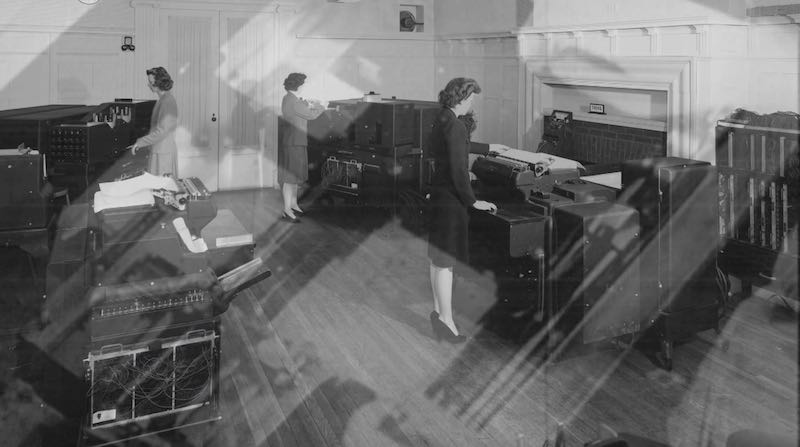I learned about the documentary Top Secret Rosies: The Female Computers of WWII from being on Twitter at the right moment to catch a tweet in a conversation about Black History Month from my BlogHer friend Kim Pearson.
Kim is an Associate Professor in Journalism and Professional Writing at The College of New Jersey. Back when we were both writing at BlogHer, I was writing a technology column. She always called me her guru. When I saw the following, I fired back to her that she always had her own guru!
I easily found the documentary, which was originally on PBS. It’s currently available on Amazon Video, which is where I watched it. I’ll get to the documentary in a minute. If you look at the image up at the top where the women are faded into the background, you can see Kim’s distant cousin on the lower left under the letter R in Rosies.
Her relative isn’t mentioned by name in the documentary. But she is the topic of an article in the Society of Women Engineers’ magazine called “Finding Top Secret Rosie Alyce Hall.” Here’s a PDF of that article. Read the story of the two African American women who participated in the secret ballistics program during WWII.
Kim’s story made me think of Hidden Figures and what an eye opener it was for a lot of people.
Top Secret Rosies: The Female Computers of WWII
The documentary was paid for with a grant from AAUW to the director LeAnn Erickson. Here’s the story from AAUW: The Top-Secret, Female Computers of World War II. “When it comes to history, it is unfortunately often only the dominant voice that writes the narrative and dictates what is worth memorializing. That’s why it’s especially exciting when something new is uncovered, a different voice given the chance to tell their version of the story. More than 70 years ago, “when computers were human and women were underestimated, a group of female mathematicians helped win a war and usher in the modern computer age.” Now, their history has finally been told. This is the story of Top-Secret Rosies.”
The hour-long documentary details that forgotten history. The women who worked on this project did calculations for aerial bombing and ballistics trajectories. They were called computers or computists. A computer was not a machine but a person back in those days.

Three women were the focus of the documentary. They talked about how they were hired and where they worked. They described the machines used at that time. Big room sized mechanical monsters. Nothing was digital yet.
As the war was ending, the ENIAC computer was created. These women mathematicians were the ones who learned to program the new machine. Some of them stayed with computer programming after the war ended. Some went on to other pursuits.

One thing is clear. Without these women mathematicians, America would have lost the war. But their stories were never told until this 2010 film was released. The press at the time never mentioned women. Men became the faces of the success of the ballistics programs, the bombing calculations, and the development of ENIAC.

This story of women finding their way to leadership when their country needed them is one women have never stepped back from. It made women hungrier for the chance to take more significant roles in the world. This story is definitely worth the hour it takes to watch it on Amazon Video. (affiliate link)

Pingback: Leveraging a usable past: family history and the epistemology of civic life – Kim Pearson
I have one small correction to offer. The woman in the beige top standing next to ENIAC in the photo you posted is Jean Jennings Bartik, not Shirley Blumberg Melvin.